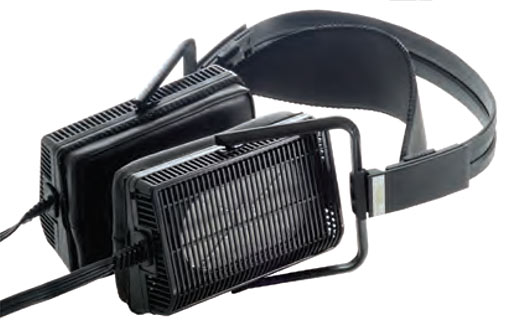It would not be a stretch to call Stax “the ?rst audiophile headphone.” Back when almost all other full-sized headphones were using dynamic drivers, Stax had already established itself as preeminent by using planar-electrostatic technology exclusively. Nowadays, however, audiophiles have their choice of planar designs from many other manufacturers at lower prices. Consequently, Stax needed an earspeaker in a more affordable package, so it developed the SR-L700 ($1400). Unlike most headphones all Stax electrostatic earspeakers use special dedicated ampli?ers to drive them, which increases the cost of a Stax system proportionately. (Combined with the SRM-007tII drive unit, an SR-L700 system runs $3650.)

The SR-L700 utilizes the same “sound element” developed originally for the ?agship SR-009. Stax calls this new ultra-thin polymer material “super-engineering plastics.” This Stax transducer also uses a special electrode scheme, which Stax named MLER (multilayer electrodes). The company’s intention was to create a thinner, lighter, stronger diaphragm material coupled with a thinner, lighter, and more powerful electrode array, and it has succeeded on both counts.
Where the SR-L700 differs from the SR-009 is that instead of the round enclosure featured on that model, the SR-L700 uses the traditionally shaped Stax Lambda Pro rectangular enclosure, headband, yoke, and earpads. A manufacturer could assemble the ?nest-sounding personal transducer ever made but if it doesn’t ?t well, it’s sure to be a failure. The Stax Lambda Series has long been considered among the most comfortable headphone designs ever devised, and the SR-L700 continues this tradition.
The SR-L700, like almost all Stax earspeakers, is an open-back unit. That means it is intended for private listening at home in a quiet environment. If you need isolation and portability, the SR-L700 is not your best option.
Click here to download The Absolute Sounds review.